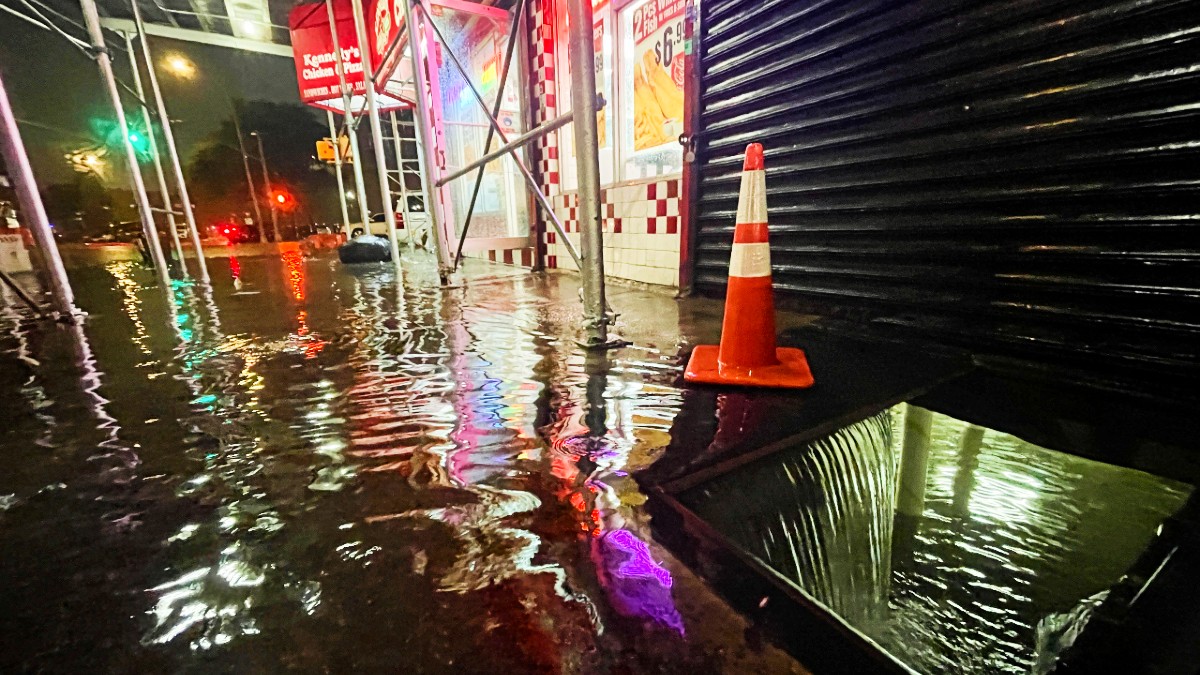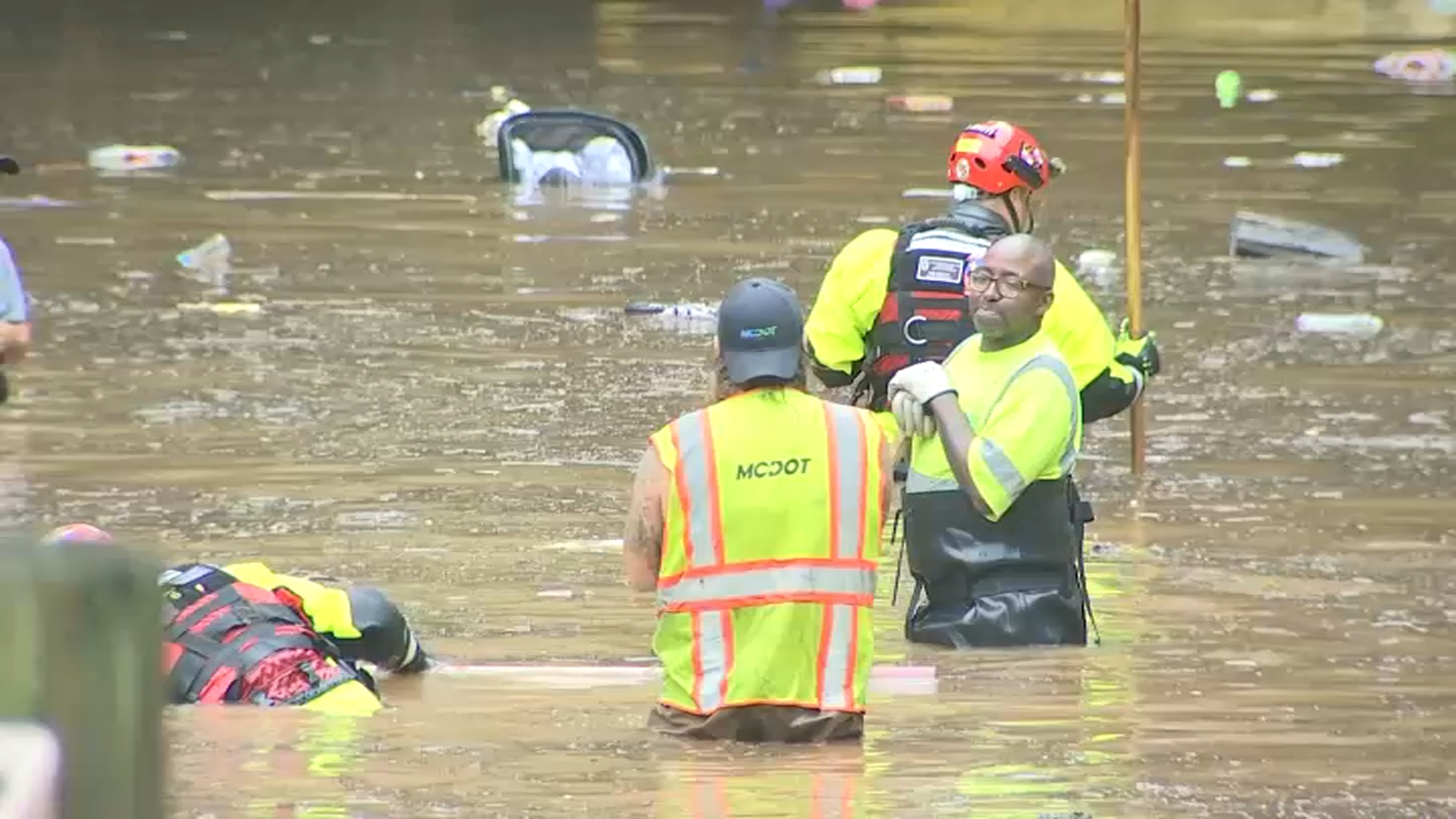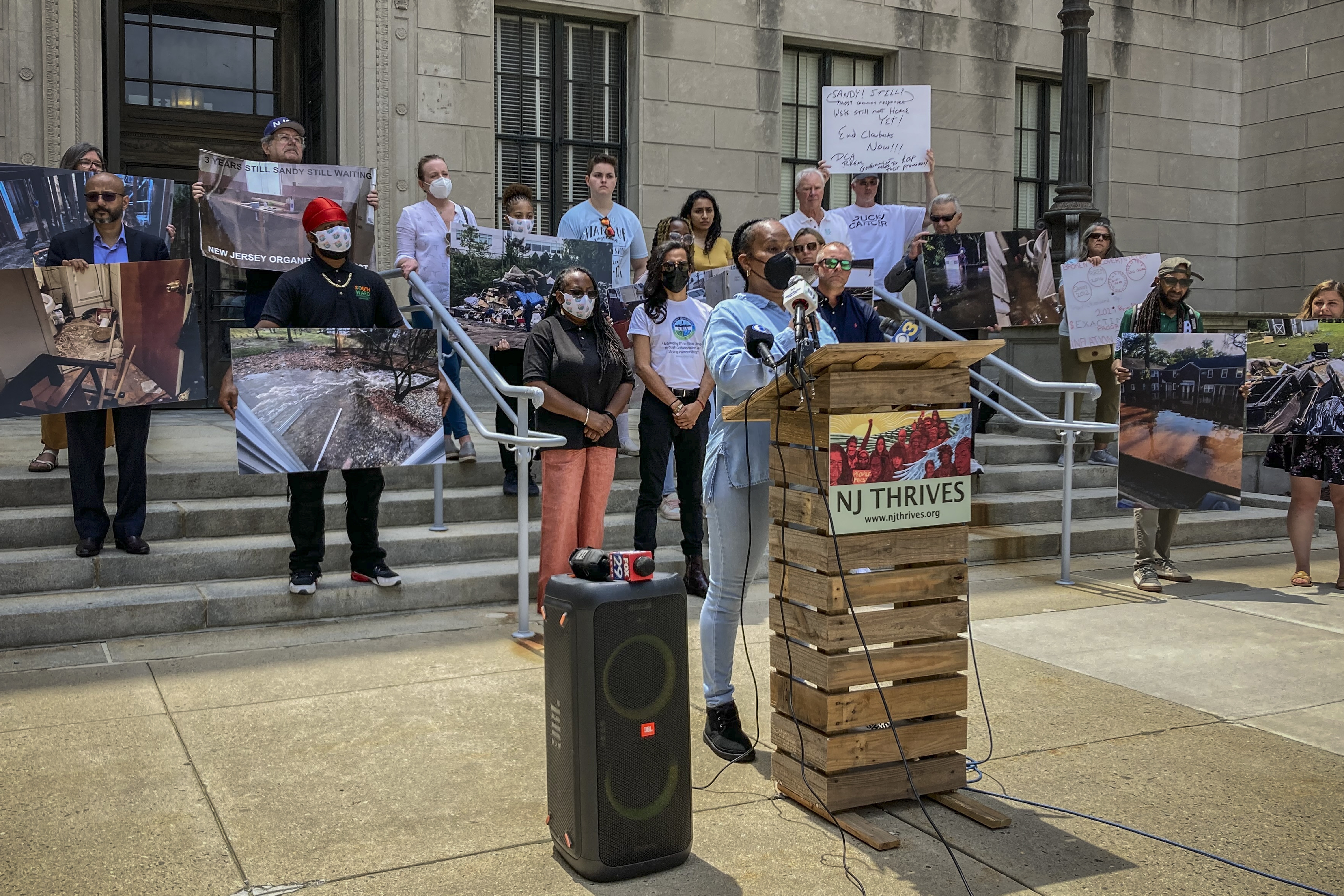On 183rd Street in the Hollis neighborhood of Queens, Angshu Baidya’s home is still in disarray.
A full 12 months after Ida’s flood waters swept through, Baidya says his basement foundation is still compromised. He says much of his electrical wiring is temporary. And his sewer pipe is still damaged. If anyone has felt the crushing impact of climate change, Baidya says it is his family.
"My floor is shaky. I have video. Everything. But nobody helps," Baidya said.
When the storm inundated the intersection 183rd Street and 90th Avenue, two people drowned in a basement apartment across the street from Baidya.
The loss of life and property are indisputable. And flash floods have been a repeated problem on Baidya’s intersection for years. But it turns out, the state of New York does not consider his neighborhood “disadvantaged” for the purposes of determining who should be prioritized for climate change financial aid.
Get Tri-state area news delivered to your inbox. Sign up for NBC New York's News Headlines newsletter.
The reason?
The state’s current criteria for assessing climate change burdens include measures of coastal and river flooding risk – but do not include a measure for the risk of flash flooding.
In 2019, New York lawmakers passed the Climate Leadership and Community Protection Act, which promised "disadvantaged communities" – the ones hit hardest by climate change – should be prioritized to receive at least 35 percent of benefits associated with state spending on clean energy programs and investments in housing, workforce development, transportation, and economic development.
To determined which neighborhoods would get the “disadvantaged” designation, an appointed team called the Climate Justice Working Group (CJWG) considered 170 different indicators of environmental and socio-economic burden. The group initially chose 45 of those indicators as criteria for climate disadvantage, but flash flooding risk was left out.
"[P]luvial flooding, or flash and surface flooding, is an indicator that the CJWG considered," said an emailed statement from the New York Department of Environmental Conservation. "[But] it was determined that an initial robust statewide dataset was not available at the time."
The DEC stressed the current map of disadvantaged communities is just a draft and the advisory committee may choose to include a metric for flash flooding risk in the future, especially if new data becomes available or is identified. But some say governments around the world already have the tools to begin incorporating flash flooding risk in their decisions about how to allocate storm resiliency and response dollars.
"Now we have access to higher resolution data which means we can see, street by street, what the climate risk levels are," said Andrew Kruczkiewicz, an expert on flash flood early warning systems at the Columbia Climate School.
Kruczkiewicz said policy makers and their constituents often underestimate the risk of flash floods when deciding how to respond to climate change – because big coastal storms with massive storm surge - like Superstorm Sandy - tend to monopolize people’s memories.
"Flash floods are happening now and the impact is getting worse and worse," Kruczkiewicz said. "If you look at the loss of life from Sandy and Ida, it’s not that much different."
In August, 14 elected leaders from Queens signed a letter urging the Hochul administration to update the criteria for "disadvantaged community" classification to include risks associated with flash flooding.
"We write to urge the Climate Justice Working Group to ensure that flooding in coastal, tidal, and inland areas receive added weight as indicators," the letter read.
Queens Borough President Donovan Richards was one of those who signed the letter. He worries if the state’s criteria for "disadvantaged" status isn’t changed, the state risks favoring wealthier coastal and waterfront neighborhoods over interior blocks where middle and low-income New Yorkers live.
"These communities are the ones hit hardest at the slightest hint of rain," Donovan said. "There is no other way around it. This is environmental racism if we don’t address this."
The Hochul Administration stressed communities that do not qualify for "disadvantaged" status under the Climate Act can still be eligible for funding and assistance related to climate change. In November, New York State voters will decide whether to approve a $4.2 billion dollar environmental bond, part of which could be dedicated to restoring flood ravaged homes.
New York City is currently deciding how to allocate a $25 million federal block grant which could also be used to upgrade single family homes hit hard by storms. FEMA has already disbursed millions of dollars to help rebuild Queens homes ravaged by Ida, including $1.3 million that went to 202 households in Hollis, where Angshu Baidya lives.
Baidya says the cash he got from FEMA was exhausted on initial clean-up costs associated with pumping water out of his home last year.
“FEMA gave some money, but that money was only for cleaning,” Baidya said.




